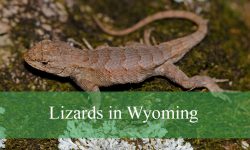Wild rabbits are a familiar sight across Maryland’s fields, forests, and even suburban neighborhoods. These small, alert mammals are not only charming but also play an important role in maintaining the ecological balance of the state. Their soft fur, quick movements, and large, expressive eyes make them some of the most easily recognized wild animals in Maryland.
The state’s diverse geography creates ideal conditions for different rabbit species to thrive. From the mountain slopes in the west to the wetlands near the Chesapeake Bay, each region provides unique habitats for rabbits to find food, shelter, and safety. Some species, such as the Eastern Cottontail, are abundant and frequently seen in open areas, while others, like the Appalachian Cottontail and Snowshoe Hare, live quietly in more secluded environments.
This guide introduces the four types of wild rabbits found in Maryland. It explains how to identify them, where to find them, and what makes each one special. Understanding their habits and habitats helps nature lovers appreciate these small creatures and the vital role they play in Maryland’s natural ecosystems.
1. Eastern Cottontail (Sylvilagus floridanus)
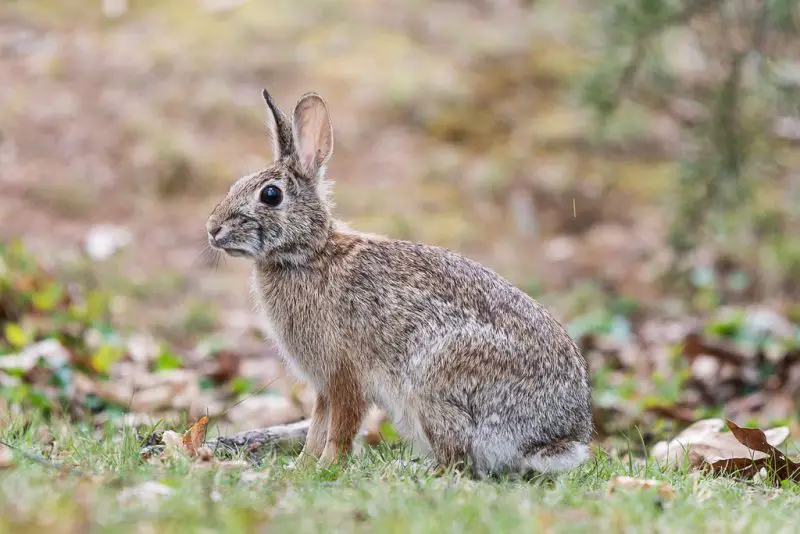
The Eastern Cottontail is the most widespread and familiar rabbit species in Maryland. Known for its distinctive fluffy white tail, this species is commonly seen darting through grassy lawns or along woodland edges. Adults typically measure between 14 and 17 inches in length and weigh around 2 to 4 pounds.
Identification and Appearance
The Eastern Cottontail has grayish-brown fur with a reddish tint, a white underbelly, and a short, rounded tail that’s bright white underneath, resembling a puff of cotton. Its large brown eyes and long ears provide excellent vision and hearing to detect predators. Unlike hares, its ears are shorter, and its overall body is more compact.
Behavior and Diet
This rabbit is mostly crepuscular, meaning it’s most active during dawn and dusk. It spends the day hiding in dense brush or grassy cover, emerging when light levels are low. Its diet includes grasses, clover, wildflowers, bark, and buds. During winter, when food is scarce, it may nibble on twigs or even garden plants.
Habitat and Distribution
The Eastern Cottontail thrives in open fields, farmland edges, and suburban areas. It’s extremely adaptable, often found near human settlements. In Maryland, this species occurs statewide, from coastal plains to the foothills of the Appalachians. Its high reproductive rate—producing several litters a year—helps maintain a strong population even with high predation rates from foxes, hawks, and owls.
2. Appalachian Cottontail (Sylvilagus obscurus)
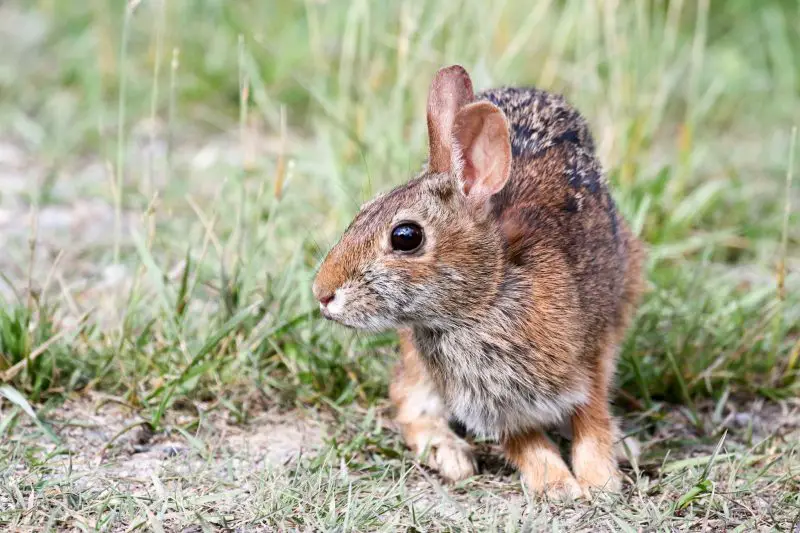
The Appalachian Cottontail is Maryland’s mountain rabbit, found primarily in the western part of the state, especially in Garrett and Allegany counties. It’s rarer than the Eastern Cottontail and prefers higher elevations with dense forest cover.
Identification and Appearance
At first glance, this species looks similar to the Eastern Cottontail but is generally smaller, darker, and has a rounder head. Its fur is a deep brown mixed with black and gray, and unlike the Eastern Cottontail, it lacks a prominent white spot on the forehead. The ears are shorter and edged with black, and its body appears more compact.
Behavior and Habitat
Appalachian Cottontails are shy and elusive. They inhabit mountain thickets, conifer forests, and brushy clearings, especially where rhododendrons and mountain laurel grow densely. This cover provides essential protection from predators and harsh weather. Their home range is much smaller than that of the Eastern Cottontail, and they rely on secluded areas to survive.
Range and Conservation
In Maryland, this rabbit’s range is limited to the Appalachian Plateau, where it overlaps slightly with the Eastern Cottontail. However, habitat fragmentation poses a risk to its survival. The Appalachian Cottontail is listed as a species of concern in some states because of its restricted habitat and declining population. Conservation efforts focus on preserving mature forests and maintaining dense understory vegetation.
3. Marsh Rabbit (Sylvilagus palustris)
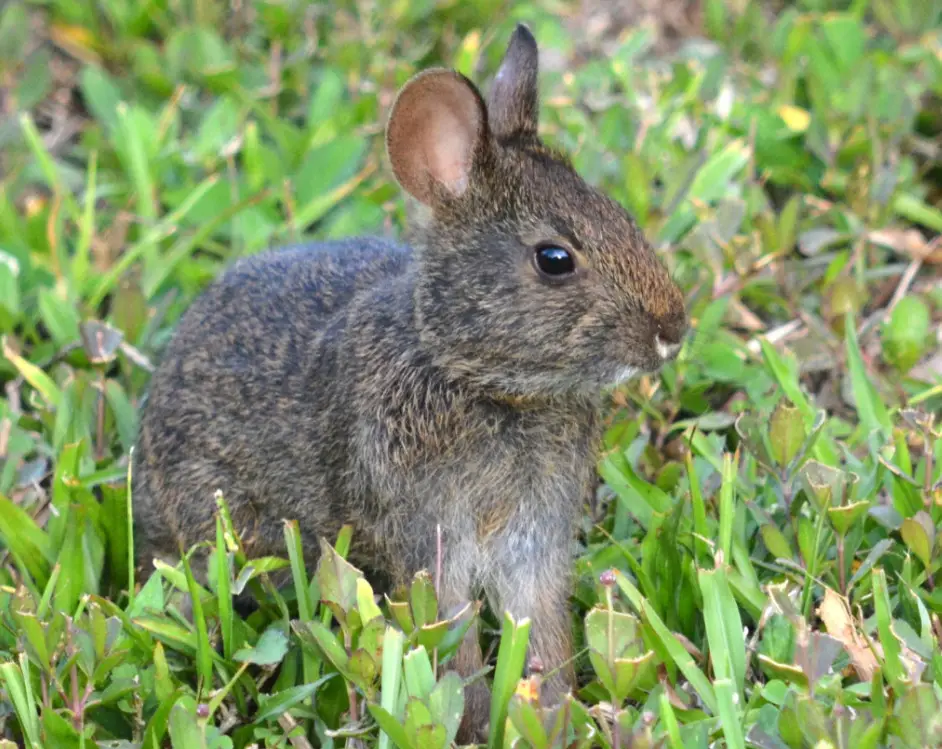
The Marsh Rabbit is primarily a southern species, but it occasionally ventures into Maryland’s southernmost tidal wetlands. Its range extends through the southeastern U.S., including Virginia and the Carolinas, and the farthest northern populations have been documented in southern Maryland near the Chesapeake Bay.
Identification and Appearance
The Marsh Rabbit has a smaller, stockier body than the Eastern Cottontail, with shorter ears and a nearly invisible tail. Its fur is dark brown, and its underparts are usually grayish rather than white. One of its key adaptations is its water-resistant fur and strong legs designed for swimming.
Habitat and Behavior
True to its name, the Marsh Rabbit thrives in wet, swampy environments, including brackish marshes, tidal creeks, and swamplands. It’s an excellent swimmer and often takes to the water to escape predators — a behavior rare among rabbit species. It feeds on aquatic plants, grasses, and reeds, foraging near the water’s edge.
Status in Maryland
Although not a permanent resident, the Marsh Rabbit is occasionally observed in the southern coastal counties, particularly around St. Mary’s County and lower Chesapeake Bay wetlands. Its northern presence is considered sporadic, and Maryland’s cold winters typically prevent it from establishing stable breeding populations. Nonetheless, it represents an interesting overlap between Mid-Atlantic and Southeastern ecosystems.
4. Snowshoe Hare (Lepus americanus)
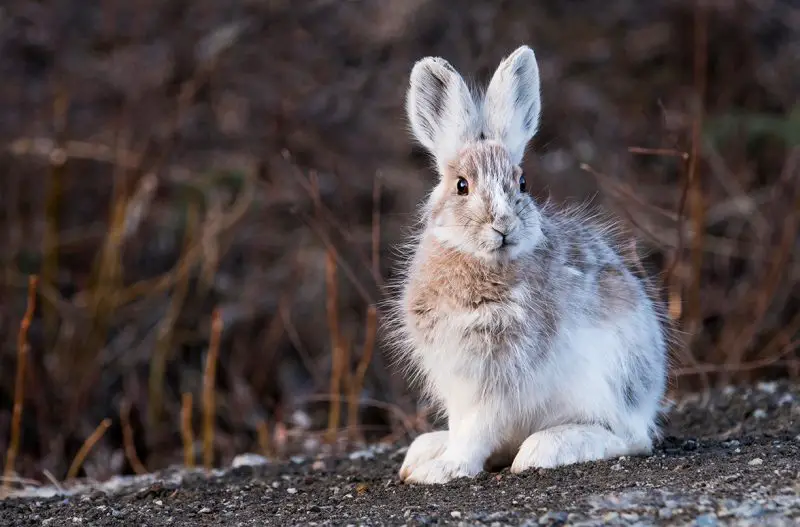
The Snowshoe Hare is a rare and historical species in Maryland, once found in the highest elevations of Garrett County. It’s better adapted to colder climates and snowy environments, which makes it far more common in northern states and Canada. Today, it’s considered extirpated or extremely rare in Maryland.
Identification and Appearance
This hare is named for its large hind feet, which are covered in dense fur and act like snowshoes, allowing it to move easily across snow. It’s also famous for its seasonal color change — brown in summer and white in winter — which provides camouflage throughout the year. Snowshoe Hares are larger than cottontails, with longer ears and more powerful legs for running through deep snow.
Habitat and Behavior
Snowshoe Hares inhabit dense spruce-fir forests, brushy woodlands, and high-elevation thickets. They are solitary and primarily nocturnal, feeding on woody plants, bark, and buds during winter, and grasses and herbs during warmer months. Their population numbers fluctuate naturally due to predator-prey cycles.
Status in Maryland
Historically, Snowshoe Hares lived in Maryland’s western mountain forests, but with climate changes and habitat loss, they have nearly disappeared from the state. Occasional individuals may wander across the border from West Virginia, but stable populations no longer exist. Nonetheless, they remain an important part of Maryland’s wildlife history and a reminder of the state’s once-colder ecosystems.
Summary Table of Wild Rabbits in Maryland
Common Name |
Scientific Name |
Distribution in Maryland |
Habitat |
Status |
|---|---|---|---|---|
Eastern Cottontail |
Sylvilagus floridanus |
Statewide |
Fields, edges, suburban areas |
Common |
Appalachian Cottontail |
Sylvilagus obscurus |
Western mountains |
Forests, thickets |
Rare |
Marsh Rabbit |
Sylvilagus palustris |
Southern coastal wetlands |
Marshes, swamps |
Occasional visitor |
Snowshoe Hare |
Lepus americanus |
Western highlands (historical) |
Cold forests |
Very rare/extirpated |
Tips for Observing Wild Rabbits in Maryland
1. Choose the Right Time
Rabbits are most active at dawn and dusk, when they venture out to feed. Early mornings in spring and summer offer the best chances for sightings, especially in fields or grassy clearings.
2. Look in the Right Habitats
The Eastern Cottontail is easy to find in suburban yards, parks, and meadows. For rarer species like the Appalachian Cottontail, head to western mountain regions with dense shrubs. Near wetlands, you might spot a Marsh Rabbit grazing quietly along a creek.
3. Stay Quiet and Observant
Rabbits have excellent hearing and eyesight. Move slowly, avoid sudden gestures, and use binoculars to observe from a distance. Standing still near their feeding areas often rewards patient watchers with a close look.
4. Create Rabbit-Friendly Yards
To attract rabbits to your property, plant native grasses, clover, and shrubs. Avoid using pesticides and leave small patches of unmowed grass for cover. Providing water sources and shelter from predators helps them feel safe.
5. Respect Their Space
Wild rabbits are easily stressed by close human contact. Avoid trying to touch or handle them, and never approach a nest. Rabbits play a vital role in Maryland’s ecosystems by supporting predators and maintaining plant balance.
FAQs about Wild Rabbits in Maryland
What is the most common wild rabbit in Maryland?
The Eastern Cottontail is the most common rabbit species throughout Maryland. It thrives in both rural and suburban settings, adapting easily to changes in landscape and human presence.
Are there hares in Maryland?
Historically, yes. The Snowshoe Hare once lived in western Maryland, but it’s now extremely rare or possibly extirpated due to warmer winters and habitat loss.
Where can I find Appalachian Cottontails?
You can find Appalachian Cottontails in Garrett and Allegany counties, especially in forested mountain areas with dense understory vegetation.
Do wild rabbits hibernate?
No. Rabbits remain active year-round, even in winter. They adapt by foraging on bark, twigs, and any remaining green vegetation.
Can wild rabbits swim?
Only the Marsh Rabbit is known for strong swimming abilities. It can cross small creeks and dive underwater briefly to escape predators.
What do wild rabbits eat in Maryland?
Wild rabbits primarily eat grasses, weeds, clover, bark, and buds. During winter, they may chew on woody plants and stems when fresh vegetation is scarce.
Are wild rabbits protected in Maryland?
Some species, like the Appalachian Cottontail, are considered of conservation concern, especially in the western counties. However, the Eastern Cottontail remains abundant and is legally hunted during specific seasons.
Conclusion
Maryland’s wild rabbits add life and motion to its landscapes, from the bustling farmlands of the east to the forested ridges of the west. The Eastern Cottontail dominates the scene, while the Appalachian Cottontail and Marsh Rabbit reveal the hidden biodiversity tucked into mountain and wetland habitats. The Snowshoe Hare, though now rarely seen, remains a fascinating reminder of Maryland’s natural history.
Each species, in its own way, contributes to the balance of Maryland’s ecosystems. Observing them responsibly not only enriches your outdoor experience but also deepens appreciation for the state’s wildlife heritage.

